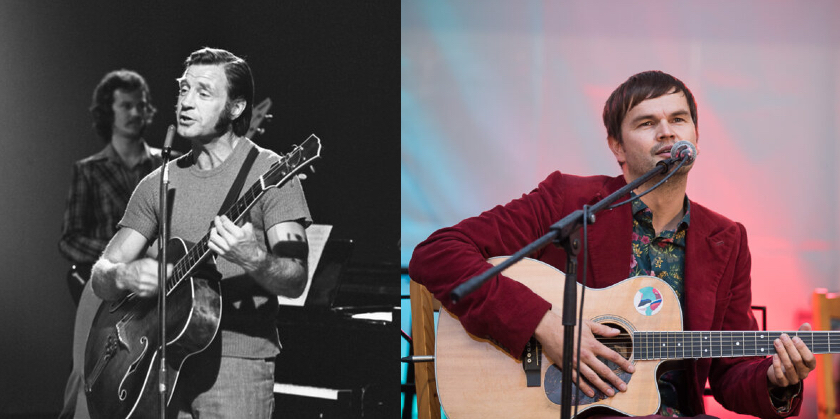One of the most well-known untranslatable words—from an English-language perspective, that is—is “saudade”, which comes from Portuguese. We can actually find an equivalent in Estonian with the word “igatsus.” Saudade is a feeling of longing for someone or something that is gone, seemingly reserved for the cultures of Portuguese-speaking nations. At least, that's what I thought until I watched Estonian singer and guitarist Vaiko Eplik perform at Tartu College for the final concert of Estonian Music Week in November 2019.
An exemplary entertainer, Eplik's dramatically translated version of “Bohemian Rhapsody” had the audience wheezing with laughter. Yet, it was his then-unreleased song “Kamoon Uno”, a bossa nova style tune with Brazilian flair that knocked me over completely. Just him and a caramel-coloured acoustic guitar, shifting through reams of rich open chords like the best of them: Antonio Carlos Jobim, Rosinha de Valença, João Gilberto.
The recorded version was released in May 2020 as a 90th birthday tribute to late musician (and athlete) Uno Loop and a tribute to the late composer Uno Naissoo. It's accented with wispy backing vocals and cross-stick drumming. But Eplik's live solo performance held up, too: the true test of whether a composition is strong.
The sway of this song put us in a state of reminiscence, like an evening spent leafing through an old photo album. That sensation connects to the artwork of the song, which shows the two Unos playing jazz together in a club in 1950s Estonia. Eplik communicates the vigour of a past time as he croons and calls out the name Uno.
To get a sense of what moved a songwriter from the central Estonian village of Pae, in Rapla County, to present his own take on this style of music from another hemisphere, it's highly recommended to listen to archival recordings of Uno Loop, including his earlier band, Eesti Raadio Meeskvartett (the Estonian Radio Men's Quarter). The songs performed by the quartet show the styles of music from abroad received in Estonia during the early 1960s.
From here, listen to Marju Kuut and Uno Loop's joint album from 1971, especially tracks like “Sa tantsi sambat” (similar to “Só Danço Samba”) and “Las kõlab bossa-nova” (“Desafinado”). The lyrics don't exactly line up to the original songs, but music can translate the overall sentiment for us. Case in point is the album's instrumental track “Kauge rõõm,” which is a rendition of “O Grande Amor.” The weeping saxophone is immediately recognizable. In fact, much of the album connects back to the best-selling Getz/Gilberto album from 1964. Loop and his musical collaborators broadened the reach of samba, and its descendent bossa nova, among Estonians.
The love for jazz and related genres found in this album grew, as shown by albums like Kadriko by Collage (1974). Uno Naissoo, mentioned above, released a swaggering funk album titled Mälestusi Kodust in 1978. Is it possible that life in Estonia cultivated players who could communicate the moods of these genres from abroad?
As Eplik said in a 2018 interview with Raplamaa Sõnumid, “It is said that pop music is not site-specific, but I would argue against it. The natural views that surround Rapla County are so strongly inside [my] psyche that they have certainly influenced the nature of this music as well. I began to think of songs out of boredom as I walked home from school… I remember it was a very boring and monotonous activity to come home two and a half kilometres from the train station. At some point, a melody added to the rhythm of the walk, and then I figured out the words, and that's how it started…”
When Eplik sang a song rooted in samba, but in Estonian, I felt it in my soul. He tapped into the saudade with honesty and reality. Subsequently, it led to a deeper exploration of his intriguing discography.
After Eplik's show, I knew I had to say something, to emphasize to him just what it meant as a listener. For Vaiko Eplik's transportation of the sway of samba to Toronto via Rapla County, I cheer him on. Kamoon Vaiko!




